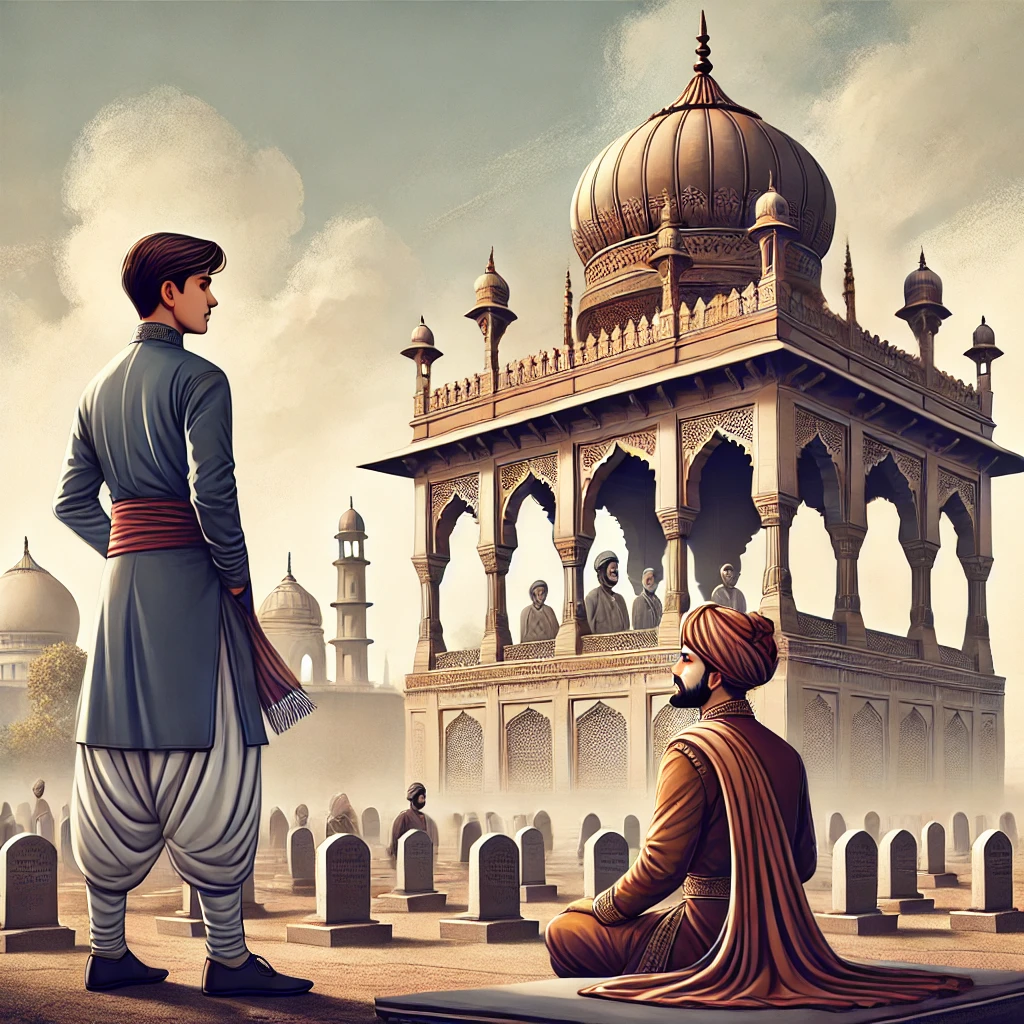Why Did Shivaji’s Grandson Go on a Pilgrimage to Aurangzeb’s Tomb?
The recent visit of Shivaji’s descendant to Aurangzeb’s tomb has sparked curiosity and controversy alike. Given the historical animosity between Chhatrapati Shivaji Maharaj and Mughal Emperor Aurangzeb, many have questioned the intent behind this pilgrimage. To understand this event, we must explore the historical context, the significance of Aurangzeb’s rule, and the possible motivations behind this visit.
The Historical Context: Shivaji vs. Aurangzeb
Chhatrapati Shivaji Maharaj was the founder of the Maratha Empire and a fierce opponent of Mughal expansion in India. His conflicts with Aurangzeb are well-documented, marked by battles, political rivalries, and Shivaji’s daring escape from Agra in 1666. While Shivaji sought to establish Hindavi Swarajya (self-rule for the Hindus), Aurangzeb aimed to expand his Islamic empire, leading to inevitable clashes between the two powers.
Even after Shivaji’s death, the struggle between the Marathas and the Mughals continued. Aurangzeb spent the final years of his life waging war against the Marathas, ultimately passing away in 1707 in Maharashtra, where his tomb now lies.

Why Did Shivaji’s Grandson Visit Aurangzeb’s Tomb?
Several possible reasons could explain this unusual visit:
1. A Historical Reconciliation Gesture
One interpretation is that the visit was an attempt to promote historical reconciliation. Despite their conflicts, both Shivaji and Aurangzeb played pivotal roles in shaping India’s past. A symbolic visit to the tomb could signify a broader acceptance of history without lingering animosity.
2. Cultural and Religious Pilgrimage
It is also possible that the visit was purely religious. Many royal families in India maintain a tradition of visiting significant historical and religious sites, regardless of past conflicts. Aurangzeb’s tomb, located in Khuldabad, Maharashtra, is a site of historical and religious significance, drawing visitors from various backgrounds.
3. Political and Diplomatic Move
Given the charged political atmosphere in India, such a visit might carry political undertones. It could be aimed at fostering harmony between communities or redefining the legacy of historical figures in a new light. By acknowledging the past, it could encourage a more balanced perspective on historical events.
4. Historical Curiosity and Academic Interest
Historians and descendants of royal families often engage in research trips to understand their ancestors’ past. Shivaji’s descendants might have visited Aurangzeb’s tomb to study its history, architecture, and significance in the broader narrative of Mughal-Maratha relations.
Public Reaction and Controversy
As expected, the visit has stirred reactions from various groups:
- Maratha Groups and Shivaji’s Supporters: Many Maratha nationalist groups have condemned the visit, stating that it disrespects the sacrifices made by Shivaji and his successors in resisting Mughal rule.
- Historians and Scholars: Some historians argue that such visits should be seen through an academic and cultural lens rather than a political one.
- Political Figures: Politicians have used this event to either criticize or support the act, depending on their ideological stance.
FAQs About Shivaji’s Grandson’s Visit to Aurangzeb’s Tomb
1. Who was Aurangzeb, and why is he controversial?
Aurangzeb was a Mughal emperor known for his expansionist policies and religious intolerance. He is a controversial figure because of his strict Islamic rule and conflicts with Hindu rulers like Shivaji Maharaj.
2. Why is Aurangzeb’s tomb significant?
Aurangzeb’s tomb, located in Khuldabad, Maharashtra, is historically significant as it marks the resting place of the last great Mughal emperor. Unlike grand Mughal tombs, Aurangzeb’s is modest, reflecting his simple lifestyle.
3. Why did Shivaji’s grandson visit Aurangzeb’s tomb?
There is no official confirmation of the reason, but possible explanations include historical reconciliation, religious pilgrimage, political outreach, or academic curiosity.
4. How have Maratha groups reacted to the visit?
Several Maratha groups have opposed the visit, calling it disrespectful to the legacy of Shivaji Maharaj and the struggles of the Marathas against the Mughals.
5. Is there any political angle to this visit?
Some believe the visit may have political motives, possibly aiming to promote communal harmony or reshape historical narratives.
The Legacy of Shivaji and Aurangzeb Today
Both Shivaji Maharaj and Aurangzeb remain influential figures in Indian history, but for very different reasons:
- Shivaji is celebrated as a warrior king, a symbol of resistance, and a champion of self-rule. His legacy is honored through forts, statues, and institutions named after him.
- Aurangzeb is remembered as a powerful but controversial ruler. His policies are debated, with some viewing him as a tyrant and others as a devout, disciplined emperor.
Conclusion: Understanding History Beyond Conflicts
The visit of Shivaji’s descendant to Aurangzeb’s tomb is a reminder that history is complex. While some see it as an act of reconciliation or historical curiosity, others view it as controversial. However, rather than focusing solely on past conflicts, it is essential to understand the broader implications of such visits in the modern context.
In the end, should history be revisited to heal old wounds, or should it remain untouched out of respect for past struggles? The answer may depend on personal perspectives, but one thing is clear—our understanding of history shapes the way we view the present and future.
Pingback: "India Slams Pakistan for Hosting Fugitive Zakir Naik – ...